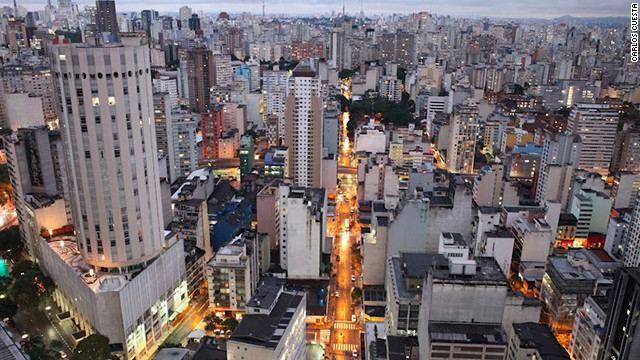 |
| Pancasila state ideology classes will be one of six courses offered to elementary school students. (JG Photo/Ali Lufti) |
As of the next academic year, the government will reinstate Pancasila
courses in Indonesia’s elementary and high schools in a desperate
attempt to halt violent behavior and the loss of cultural identity in
society.
The decision was made by the Ministry of Education and
Culture following a series of fatal brawls in high schools and
university campuses, not to mention horizontal conflicts in various
parts of the country.
Politicians and community leaders alike
have expressed worry that an absence of Pancasila courses has also
triggered a rise in ethnic and religious intolerance which could result
in national disintegration if abandoned any further.
Pancasila,
Indonesia’s state ideology, was ingrained into school curriculums a
during former president Suharto’s three decades of dictatorial rule.
Critics accused him of using the Pancasila Propagation Course, then
known as P4, as a political indoctrination instrument to cement his
power. As a result, his ouster in 1998 spelled an end to Pancasila’s
inclusion in school curricula.
In July 2003, President Megawati
Sukarnoputri signed Law No.20/2003 that resulted in Pancaila courses
being scrapped from schools. Megawati’s father, former president
Sukarno, was the one who introduced Pancasila as the nation’s guiding
ideology on June 1, 1945, prior to independence.
Historian Asvi
Warman Adam placed blame on the former government for Pancasila’s
absence in schools. He has urged then-education minister Bambang Sudiby
to apologize to the public for having made “such a frivolous blunder.”
Retno
Listyarti, secretary general of the Federation of Indonesian Teachers
Associations (FSGI), said that it is not enough just to reinstate
Pancasila in schools — the government must instill the right culture
based on the values of the state ideology, especial religious tolerance
toward minority groups, because Indonesia is a pluralist society.
She
said that discriminative treatment toward students from minority groups
was flourishing in public schools. “Civic education must lead to
greater tolerance toward our pluralistic reality. The Indonesian state
is not based on religious ideologies but on Pancasila,” she explained.
“For
example, there are schools that oblige all students to read the Koran
or [force] female students to wear Muslim dresses every Friday,” Retno
told the daily Suara Pembaruan on Monday.
The Deputy Minister of
Education, Muslia Kasin, had said that the government planned to change
the name of PPKn civic education course to Pancasila Education.
PPKn as a subject matter was introduced during the 2004 academic year, but the terminology of Pancasila was omitted.
Meanwhile,
rector of state-owned Yogyakarta University, Rochmat Wahab, said what
is important is not verbalistic changes but the true implementation of
the state ideology within society. The government must make sure that
Pancasila courses will not only serve the interests of those in power,
the academic said.
On Tuesday, Vice President Boediono threw his
weight behind the move to reinstate Pancasila in schools, stating that
Indonesian students were in dire need of soft skills, including
character building based on the values of the state ideology.
“There
aren’t soft skill lessons in our schools, and I have the impression
that we have not given sufficient attention to promoting [these] skills
in the younger generation,” Boediono said.
Such abilities are
needed to groom Indonesia’s future leaders in all fields, the vice
president explained. “This will determine the pace of our civilization.”
Boediono noted that an absence of the serious development of
character in schools in is to blame for frequent student brawls, violent
acts, corruption, markup and bribery. “And we wonder why have all these
things happened?”
Education must provide an answer to such
social maladies, Boediono noted. “My appeal is that all schools at all
levels must teach soft skills as [well] as hard skills.”
But
religious educators Maman Imanulhaq and Benny Susetyo warned that
Pancasila education is not just for students, but for the political
elite, as well.
They argued that the government does not take
proper action when citizens suffer from discriminatory treatment and
religious intolerance.
Maman, an educator at Al Mizani Islamic
boarding school in Majalengka, West Java, said that such government
inaction is proof that the political elite have failed to implement
Pancasila in the real world.
Benny, the executive secretary of
inter-religious relations at the Indonesian Catholic Bishops Conference,
said that political elites have even “parked Pancasila” and replaced it
with pragmatism and trans-nationalism. “Corruption is on the rise, as
is oppression, greed and violent behavior that endangers tolerance,”
Benny warned.
Nahdlatul Ulama’s Ansor Youth organization’s
chairman Nusron Wahid expounded the statement by saying that a number of
groups are “forcing their own interpretations of religious teachings
from narrow-minded perspectives.”
Earlier reports said the
education ministry was planning to remove science and English studies
from elementary schools, because the ministry believes that young
students shouldn’t be studying too much.
Deputy Education
Minister Musliar Kasim said that his ministry is drafting a new
curriculum that contains only six subjects: religion, nationalism,
Indonesian language, math, art and sport.
Besides scrapping
science and social studies from the curriculum, as announced on Sept.
27, the government also intends to eliminate English language lessons.
Science
and social studies will be integrated into Indonesian language classes.
“So, when learning the Indonesian language, students could study about
thunder or rain while learning to read,” the deputy minister said.
However, many education experts have said that the policy would hurt Indonesia.
In other countries, science is taught in elementary school in order to cultivate a critical and scientific culture early.
Educational observer Darmaningtyas said it was wrong to abolish or postpone sciences at elementary school.
“I
agree with reinstatement of Pancasila. ... However, it should not be
done at the expense of science and English. How can we compete at the
international level if we don’t master English and science?”
Darmaningtyas said. JG































